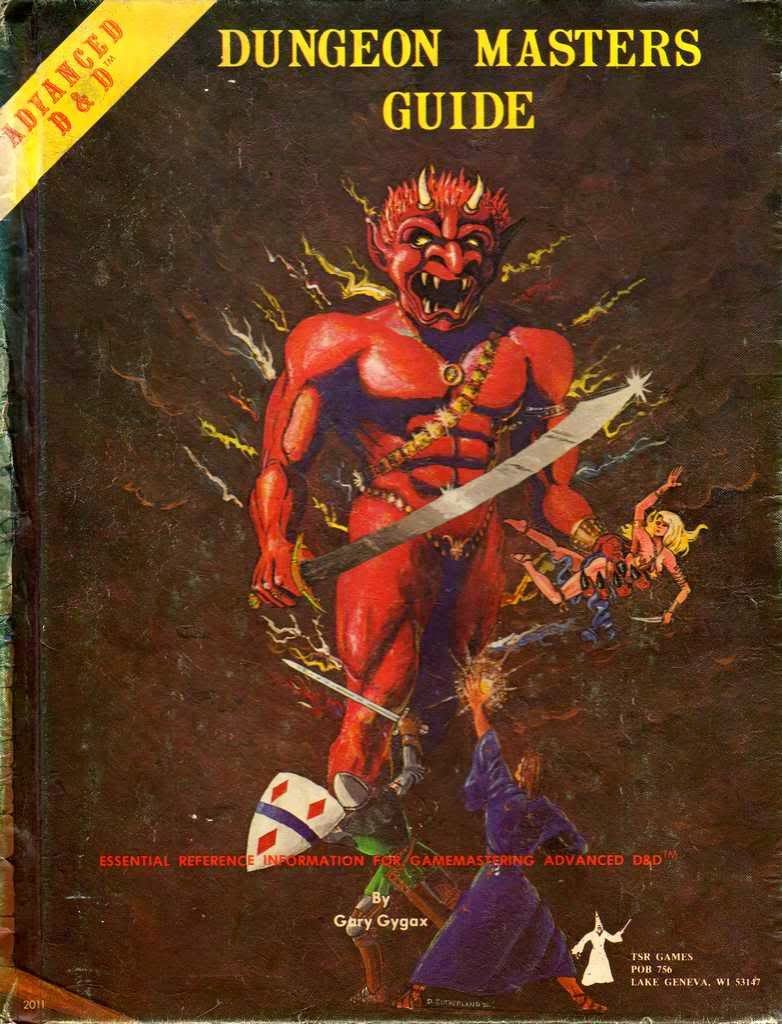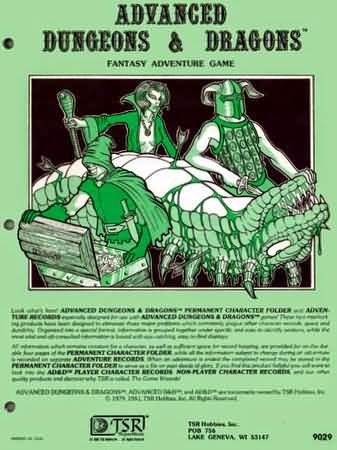Back when I was playing AD&D 1st edition on a nearly continual basis, there seemed to be two kinds of rules.
The first set of rules were the ones that got used all the time at the table during play. Combat, spellcasting, movement, climbing walls; that sort of thing. That was the sort of stuff that we either had memorized, could flip to the proper table in the DMG, PH, or UA by reflex, or just hand-waved.
However, there was a whole other set of rules that by their nature didn’t really come up during the actual game, but had to do with things that happened during down-time. This is when we poured over our character sheets making sure we had enough sacks for our coins, and our backpacks could hold all the iron spikes we carried. When we calculated how many pages our spellbooks had to be to hold all our spells (and whether we needed a traveling spellbook or a regular one). When we figured out height and weight and all that stuff. When we calculated the cost of building manors and fortifications, and hired mercenaries (were hobilars the most efficient use of our money?). Hired criers to advertise for henchmen.
All that down-time activity was incredibly fiddly, and really did require us to stop and read through rules that we didn’t use all the time, and carefully work out costs and such in the days before Excel. But it didn’t matter, because that was the sort of thing we did on our own, in between games, and if there weren’t miniatures that needed painting the time might as well be profitably spent figuring out the total carrying capacity of our hirelings (thanks to the carrying capacity rules that for some reason were only found in the instructions on the Permanent Character Record.
And when we were done, the DM didn’t even bother to check the work, because we all trusted each other, and we got on with the game. But those fiddly in-between bits were like a solo game unto themselves, and there are times I miss having the free time to while away the hours figuring out those minutiae.











You're not alone. Somethings I think we spent more time on those bits, caught up in the imagining and planning that we did play and, sometimes, even enjoyed it more.
The fellows at necropraxis have done a lot of thinking about these different kinds of rules and elevated the "off-time" activites to the same level of importance as the table time rules.
http://www.necropraxis.com/2014/12/23/hazard-system-v0-2/
Should give you enough clues to show that he's thinking along the same lines as you are, and has worked out some good solutions to the conundrum.
Merry Christmas. God bless the troops and our public safety professionals.
Yes, the hallmark of my childhood gaming vs adult gaming is that back then time at the table was just the tip of the iceberg. Nowadays I won't stand for prep that exceeds table time. Great nostalgia call.
Joe, I miss those things too! The worst part of it for me is that as a member of my current group I am in a minority (even alone perhaps). I am trying very hard to find a like minded group of players, but at least in the Pittsburgh area, it is proving to be a very difficult task.
Yeah, it was back then that table time was the culmination of all your efforts. But not necessarily more important. Part of it for me was that my desire to play far exceeded my ability to find people to play with me. So in an effort to play the game by myself, I ended up doing all the things you mention, along with rolling up oodles of characters that never saw a real adventure outside of my backstories. Some of my best memories was rolling up characters and thinking about who they were and what they were doing adventuring in the first place. I don't think there are enough game hours in the world to explore them all. This is also partly why having a character die was pretty insignificant. It was an opportunity to play other characters. Now that nobody does such things anymore and because character generation takes hours, losing a character is a giant pain.
Seems like you missed a lot of fun doing that stuff "between games" instead of using it as roleplaying opportunities.
I love the prep time too. Years ago as a player and now even more so as a DM. Every day in the long car commute I obsess about the details of the campaign world and the logic of its between-games motion. I am also inspired by your re-imagined ToEE — with all its intrigue and speculations. I think what AD&D could have always used was/is a heavily fleshed-out and well-connected campaign world for the time-pressed DM to modify and evolve.
Like you subsequent posts suggest, it could be geographically centered around the ToEE and spill out into the surroundings. Its what Greyhawk was intended to be, but the scale was just too large. DM want the mundane details in hand to "fiddle" with and modify while their imaginations unwrap the onion-layers of the larger politics.
Every listed NPC with a name, equipment list, and a locale spawns a million ideas regarding their back-story. Unfortunately the module designers did the opposite, they kept giving you the back-story and short-change you on the plausible details. No "naturalism", too much plot.